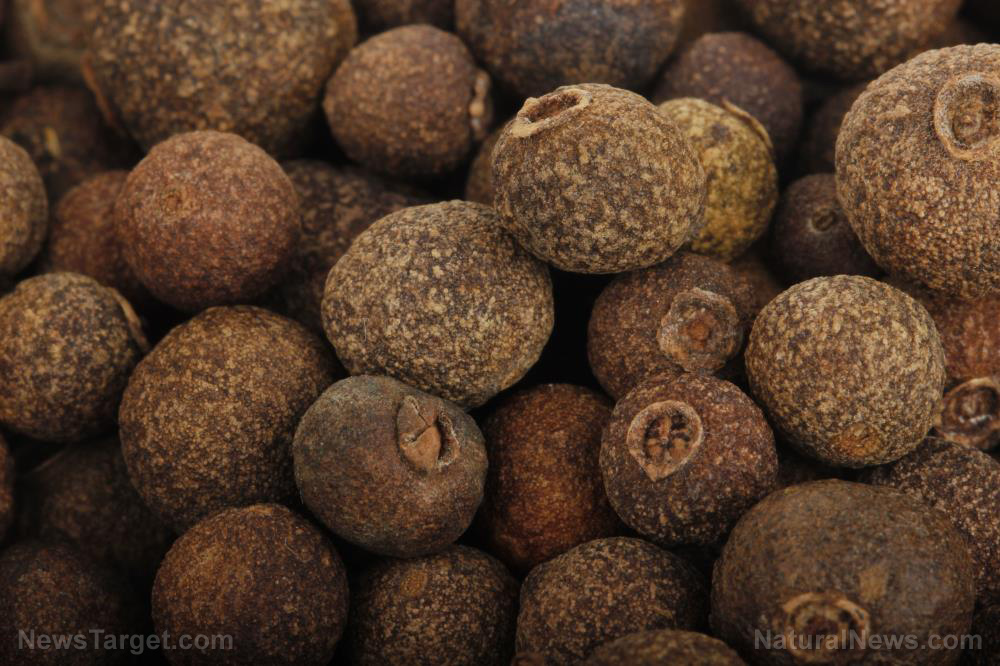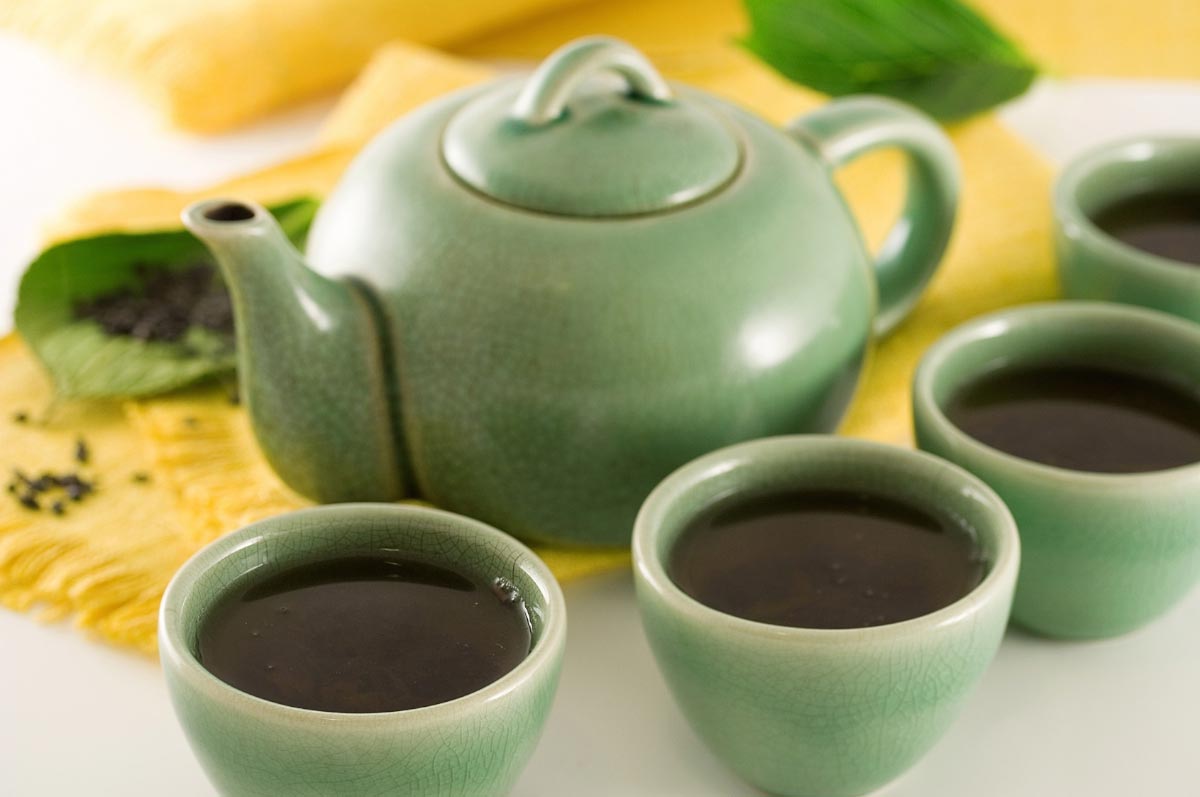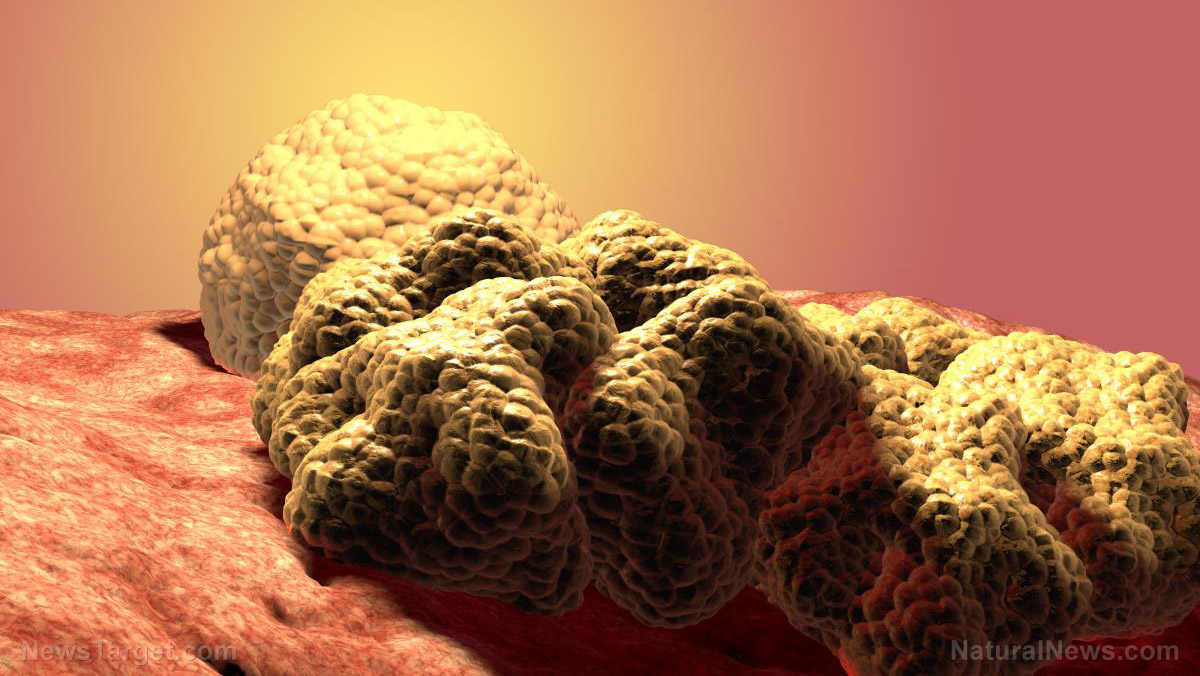The nice spice: Try allspice, a natural source of beneficial plant compounds
11/20/2023 / By Zoey Sky

It may sound like allspice is a premade blend of spices, but it’s actually a single spice.
Allspice has a unique flavor profile that is often described as a blend of up to four different spices, hence the name. The spice is also used in folk medicine due to its potential health benefits.
Allspice, also called Jamaican pepper, newspice or pimienta, is the dried, unripe berries of Pimenta dioica, a plant that belongs to the Myrtaceae family. It’s native to Jamaica, the tropical forests of South and Central America, and Southern Mexico, but it’s also commercially grown in Cuba, Honduras and Trinidad.
Allspice is made by picking the berries from the plant’s small flowers and drying them in the sun until they’re browned. Allspice is available ground or whole. It is often used as a seasoning for meats, desserts and liqueurs. (Related: Tips to help bring out the flavor of your homemade spice blends.)
When used as a spice in small amounts, allspice is considered safe to use.
However, older research suggests that people with hand dermatitis may develop allergic reactions when cooking with it.
Drug interactions are not well documented. Anecdotal evidence, however, suggests a potentially negative effect when large amounts of allspice are consumed while taking blood clotting medication.
Because of the lack of human studies on allspice’s health benefits, an appropriate dosage has yet to be determined.
Beneficial compounds in allspice
Due to its many uses in folk medicine, the compounds in allspice have been studied widely.
Those behind allspice’s benefits include:
Ericifolin
Ericifolin is a phenolic compound that may have antibacterial and cancer-fighting properties.
Eugenol
Eugenol is derived from phenylpropene. It has potential antibacterial, antifungal, anti-inflammatory, and cancer-fighting properties.
Gallic acid
Gallic acid is yet another powerful antioxidant and it may have cancer-fighting and antiviral effects.
Gallic acid has also been studied for potential protective effects on brain health, especially the prevention of Alzheimer’s disease and Parkinson’s.
Quercetin
Quercetin is a type of flavonoid, a powerful antioxidant that may help protect against harmful molecules called free radicals.
Its antioxidant capacity may have cancer-fighting properties, and it’s also known for its potential antiviral and anti-inflammatory effects.
Health benefits of allspice
Allspice provides many health benefits. Here are some of them, all backed by science:
Antimicrobial and antifungal effects
The eugenol and ericifolin in allspice may provide antimicrobial and antifungal effects.
Studies on essential oils extracted from allspice berries suggest that it has antifungal properties against Candida albicans, a yeast that is resistant to certain antifungal drugs.
Additionally, the essential oil shows antibacterial properties against E. coli, Listeria monocytogenes, salmonella and S. aureus. Its effects are mainly attributed to its eugenol content, which may damage bacterial membranes.
Menopause treatment
Menopause is the termination of the menstrual cycle in women aged 45 to 52. The condition causes hormonal changes, particularly a decline in estrogen and progesterone levels.
This may cause the following symptoms:
- Hot flashes
- Mood disorders
- Night sweats
- Sleep disturbances
- Unintentional weight gain
While hormone therapy has traditionally been the primary treatment for menopause symptoms, complementary therapies are becoming more popular, such as herbal remedies.
Research suggests that allspice extract binds to estrogen receptors. This means it may trick your body into believing that its estrogen levels are up, thus helping manage symptoms.
Can protect against cancer
Many of allspice’s beneficial plant compounds have potential cancer-fighting properties.
According to test-tube and animal studies, ericifolin, eugenol, gallic acid and quercetin may decrease tumor growth, prevent the spread of tumors and promote apoptosis or the programmed death of cancerous cells.
Allspice’s anticancer effects have been studied on breast, colon, duodenal, gastric and prostate cancers. Its effect varies depending on the type of cancer.
Research conducted on breast cancer cell lines suggests that allspice extract leads to autophagy, or the body’s way of clearing unnecessary or damaged cells, such as cancerous cells, by degrading them.
Prostate cancer cells can also be eliminated through apoptosis, while gastric cancer cell lines were affected by allspice extracts’ ability to inhibit the growth of Helicobacter pylori, a bacterium that’s considered carcinogenic.
Cooking with allspice
You may buy allspice berries, whole or ground, in the supermarket’s spice aisle. Allspice essential oil can also be bought at stores and online.
Store allspice in a cool, dry place, like your kitchen pantry.
Allspice’s unique flavor profile makes it a versatile ingredient that can be used to give a warm, peppery flavor to different dishes. Use allspice to season seafood or fish or a dessert like allspice crumb muffins.
Use whole berries the same way you would use whole cloves. Ground allspice is mostly used in baking or as a seasoning for meats, poultry, stews and vegetables.
Here are some sweet and savory dishes that you can make using allspice:
- Autumn spice cake with cream cheese frosting
- Bourbon molasses cookies
- Chai-spiced banana bread
- Cincinnati chili
- Homemade allspice dram
- Pumpkin pie
- Slow cooker chicken with Moroccan spices
Since allspice can be used in almost any dish, make sure you have it in your pantry as you prepare for the holidays.
Watch the video below to learn how to make keto apple cider donuts with allspice.
This video is from the Keto Recipes channel on Brighteon.com.
More related stories:
The sweet spice: Health benefits of nutmeg and tips for proper storage.
12 Medicinal herbs and spices that can boost the immune system.
Easy kitchen hacks: How to boost the anti-inflammatory benefits of vegetables.
Sources include:
Submit a correction >>
Tagged Under:
allspice, food cures, food is medicine, food science, Fresh, health science, herbal medicine, Herbs, natural health, natural ingredients, natural medicine, nutrition, organics, Pimenta dioica, plant compounds, prevention, remedies, research, Spices
This article may contain statements that reflect the opinion of the author
RECENT NEWS & ARTICLES
AntiCancer.News is a fact-based public education website published by AntiCancer News Features, LLC.
All content copyright © 2018 by AntiCancer News Features, LLC.
Contact Us with Tips or Corrections
All trademarks, registered trademarks and servicemarks mentioned on this site are the property of their respective owners.




















